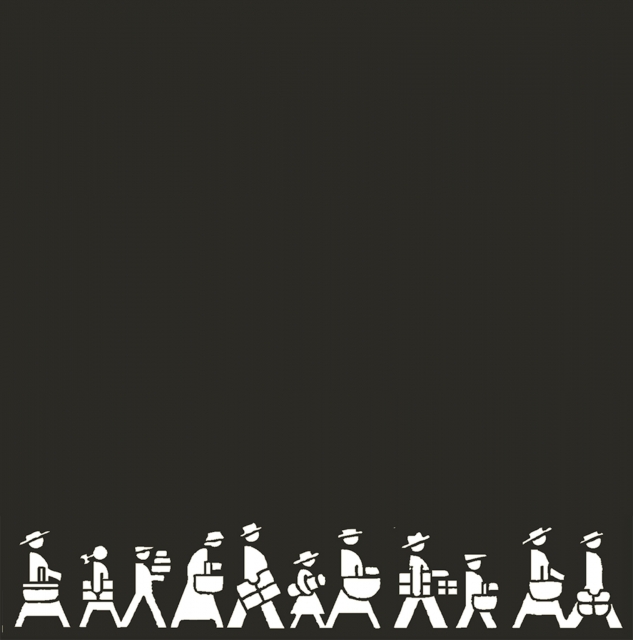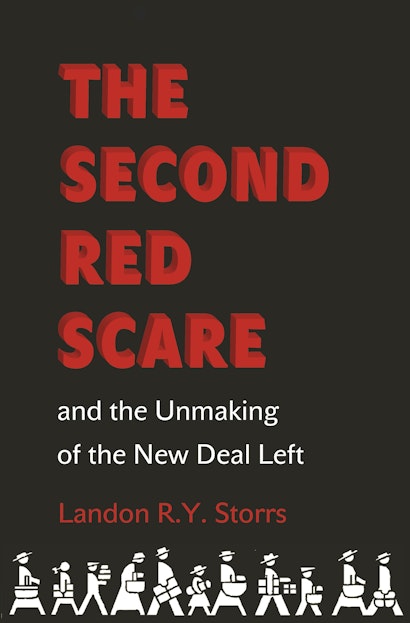Since the election of President Donald Trump, public interest in “McCarthyism” has surged, and the focus has shifted from identifying individual casualties to understanding the structural factors that enable the rise of demagogues. After The Second Red Scare was published in 2012, most responses I received from general readers were about the cases of individuals who had been investigated, or whom the inquirer guessed might have been investigated, under the federal employee loyalty program. That program, created by President Truman in 1947 in response to congressional conservatives’ charges that his administration harbored communist sympathizers, was the engine of the anticommunist crusade that became known as McCarthyism, and it was the central subject of my book. I was the first scholar to gain access to newly declassified records related to the loyalty program and thus the first to write a comprehensive history. The book argues that the program not only destroyed careers, it profoundly affected public policy in many fields.
Some queries came from relatives of civil servants whose lives had been damaged by charges of disloyalty. A typical example was the person who wanted to understand why, in the early 1950s, his parents abruptly moved the family away from Washington D.C. and until their deaths refused to explain why. Another interesting inquiry came from a New York Times reporter covering Bill de Blasio’s campaign for New York City mayor. My book referenced the loyalty case of Warren Wilhelm Sr., a World War II veteran and economist who left government service in 1953, became an alcoholic, was divorced by his wife, and eventually committed suicide. He never told his children about the excruciating loyalty investigation. His estranged son, born Warren Wilhelm Jr., legally adopted his childhood nickname, Bill, and his mother’s surname, de Blasio. I didn’t connect the case I’d found years earlier to the mayoral candidate until the journalist contacted me, at which point I shared my research. At that moment de Blasio’s opponents were attacking him for his own youthful leftism, so it was a powerful story, as I tried to convey in The Nation.
With Trump’s ascendance, media references to McCarthyism have proliferated, as commentators struggle to make sense of Trump’s tactics and supporters. Opinion writers note that Trump shares McCarthy’s predilections for bluffing and for fear-mongering—with terrorists, Muslims, and immigrants taking the place of communist spies. They also note that both men were deeply influenced by the disreputable lawyer Roy Cohn. Meanwhile, the president has tweeted that he himself is a victim of McCarthyism, and that the current investigations of him are “witch hunts”—leaving observers flummoxed, yet again, as to whether he is astonishingly ignorant or shamelessly misleading. But the parallels between McCarthy’s era and our own run deeper than personalities.
Although The Second Red Scare is about McCarthyism, it devotes little attention to McCarthy himself. The book is about how opponents of the New Deal exploited Americans’ fear of Soviet espionage in order to roll back public policies whose regulatory and redistributive effects conservatives abhorred. It shows that the federal employee loyalty program took shape long before the junior senator from Wisconsin seized the limelight in 1950 by charging that the State Department was riddled with communists. By the late 1930s congressional conservatives of both parties were claiming that communists held influential jobs in key New Deal agencies—particularly those that most strongly challenged corporate prerogatives regarding labor and prices. The chair of the new Special House Committee to Investigate Un-American Activities, Martin Dies (a Texas Democrat who detested labor unions, immigrants, and black civil rights as much as communism), demanded that the U.S. Civil Service Commission (CSC) investigate employees at several agencies. When the CSC found little evidence to corroborate Dies’s allegations, he accused the CSC itself of harboring subversives. Similarly, when in 1950 the Tydings Committee found no evidence to support McCarthy’s claims about the State Department, McCarthy said the committee conducted a “whitewash.”
President Trump too insists that anyone who disproves his claims is part of a conspiracy. One important difference is that Dies and McCarthy alleged a conspiracy against the United States, whereas Trump chiefly complains of conspiracies against himself—whether perpetrated by a “deep state” soft on terrorism and immigration or by a biased “liberal media.” The Roosevelt administration dismissed Dies as a crackpot, and during the Second World War, attacks on the loyalty of federal workers got little traction. That changed in the face of postwar Soviet conduct, the nuclear threat, and revelations of Soviet espionage. In a futile effort to counter right-wing charges that he was “soft” on communism, President Truman expanded procedures for screening government employees, creating a loyalty program that greatly enhanced the power of the FBI and the Attorney General’s List of Subversive Organizations. State, local, and private employers followed suit. As a result, the threat of long-term unemployment forced much of the American workforce not only to avoid political dissent, but to shun any association that an anonymous informant might find suspect. Careers and families were destroyed. With regard to the U.S. civil service, the damage to morale and to effective policymaking lasted much longer than the loyalty program itself.
Public employees long have been vulnerable to political attacks. Proponents of limited government by definition dislike them, casting them as an affront to the (loaded) American ideals of rugged individualism and free markets. But hostility to government employees has been more broad-based at moments when severe national security threats come on top of widespread economic and social insecurity. The post-WWII decade represented such a moment. In the shadow of the Soviet and nuclear threats, women and African-Americans struggled to maintain the toeholds they had gained during the war, and some Americans resented new federal initiatives against employment discrimination. Resentment of the government’s expanding role was fanned by right-wing portrayals of government experts as condescending, morally degenerate “eggheads” who avoided the competitive marketplace by living off taxpayers.
Today, widespread insecurity in the face of terrorism, globalization, multiculturalism, and gender fluidity have made many Americans susceptible to the same sorts of reactionary populist rhetoric heard in McCarthy’s day. And again that rhetoric serves the objectives of those who would gut government, or redirect it to serve private rather than public interests. The Trump administration calls for shrinking the federal workforce, but the real goal is a more friendly and pliable bureaucracy. Trump advisers complain that Washington agencies are filled with leftists. Trump transition teams requested names of employees who worked on gender equality at State and climate change initiatives at the EPA. Trump media allies such as Breitbart demanded the dismissal of Obama “holdovers.” Trump selected appointees based on their personal loyalty rather than qualifications and, when challenged, suggested that policy expertise hinders fresh thinking. In firing Acting Attorney General Sally Yates for declining to enforce his first “travel ban,” Trump said she was “weak” and had “betrayed” her department. Such statements, like Trump’s earlier claims that President Obama was a Kenyan-born Muslim, fit the textbook definition of McCarthyism: undermining political opponents by making unsubstantiated attacks on their loyalty to the United States. Even more alarming is Trump’s pattern of equating disloyalty to himself with disloyalty to the nation—the textbook definition of autocracy.
Might the demise of McCarthyism hold lessons about how Trumpism will end? The Second Red Scare wound down thanks to the courage of independent journalists, the decision after four long years of McCarthy’s fellow Republican senators to put country above party, and U.S. Supreme Court decisions in cases brought by brave defendants and lawyers. The power of each of those forces was contingent, of course, on the abilities of Americans to sort fact from fiction, to resist the politics of fear and resentment, and to vote.
Landon R. Y. Storrs is professor of history at the University of Iowa. She is the author of Civilizing Capitalism: The National Consumers’ League, Women’s Activism, and Labor Standards in the New Deal Era and The Second Red Scare and the Unmaking of the New Deal Left.

